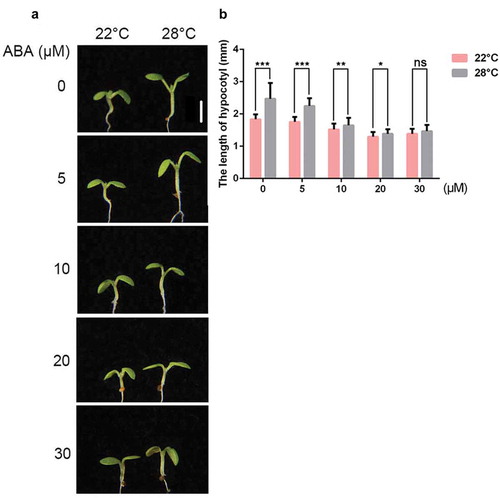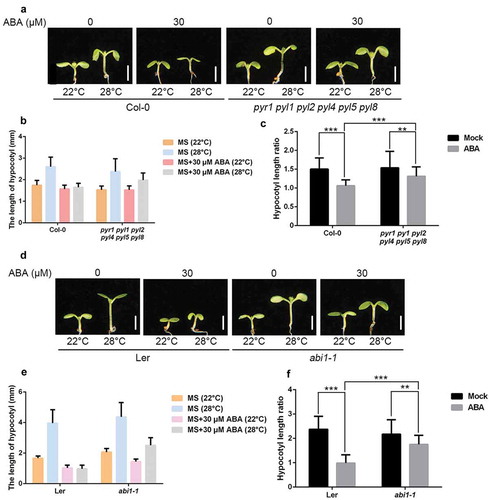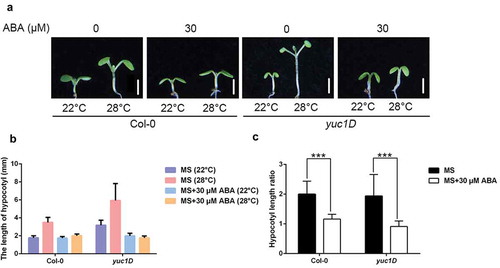Figures & data
Figure 1. ABA suppresses high temperature-induced hypocotyl elongation.
(a) Representative images showing hypocotyls of the wild-type (Col-0) grown on the MS medium supplemented with different concentrations of ABA at 22°C or 28°C. Scale bar = 2 mm. (b) Quantitative results showing hypocotyl lengths of Col-0 grown on the MS medium supplemented with different concentrations of ABA at 22°C or 28°C. Mean ± SD; n = 30.

Figure 2. Hypocotyl length of nced3 nced5.
(a) Representative images showing hypocotyl length of Col-0 and nced3 nced5 double mutants grown in the presence of 30 μM ABA or not at 22°C or 28°C. Scale bar = 2 mm. (b, c) Quantitative results for hypocotyl length (b) and relative hypocotyl length ratio (28°C vs 22°C) (c) as shown in (a). Mean ± SD; n = 30.

Figure 3. Hypocotyl length of core ABA signaling mutants.
(a) Representative images showing hypocotyl length of Col-0 and pyr1 pyl1 pyl2 pyl4 pyl5 pyl8 mutants grown in the presence of 30 μM ABA or not at 22°C or 28°C. Scale bar = 2 mm. (b,c) Quantitative results for hypocotyl length (b) and relative hypocotyl length ratio (28°C vs 22°C) (c) as shown in (a). Values shown are means ± SD; n = 30. (d) Representative images showing hypocotyl length of Ler and abi1-1mutants grown in the presence of 30 μM ABA or not at 22°C or 28°C. Scale bar = 2 mm. (e,f) Quantitative results for hypocotyl length (e) and relative hypocotyl length ratio (28°C vs 22°C) (f) as shown in (d). Means ± SD; n = 30.

Figure 4. Hypocotyl length of yuc1D.
(a) Representative images showing hypocotyl length of Col-0 and yuc1D mutants grown in the presence of 30 μM ABA or not at 22°C or 28°C. Scale bar = 2 mm. (b, c) Quantitative results for hypocotyl length (b) and relative hypocotyl length ratio (28°C vs 22°C) (c) as shown in (a). Means ± SD; n = 30.

